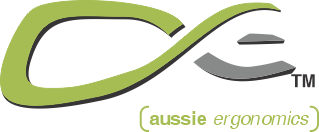
Case Studies
These case studies were reported through NexGen Ergonomics. They show success stories in employing ergonomic software and/or hardware solutions to analyse and resolve systems issues.
What motivates an astronaut, an outer space explorer, to spend a lot of time under water in an underwater habitat? The answer is, it’s a great way to simulate many aspects of zero gravity living and long term confinement that are experienced in space vehicles and stations.
For decades, NASA has been studying astronaut’s physiological responses to being exposed to zero gravity, to living in outer space and to staying in a space vehicles and space stations for extended periods of time. Researchers William Toscano and Pat Cowing have been doing this kind of research for several decades. Some of their most interesting work has involved researching the problem of Zero Gravity illness, which is sort of like car or sea-sickness. It’s a common problem among astronauts.
Just recently, Toscano and Cowing have been doing research under water, since the environment provides some useful similarities to working in space. They developed, using off the shelf technology, a wearable outfit that records multiple physiological measurements simultaneously. The technology is ultra miniaturized, using a standard FlexComp Infiniti™ physiological encoder, storing the data using flash memory cards. The astronauts, Commander Dave William, a Canadian Physician, and Ron Garin, an American, wore the “gear” throughout the day while living in an NOAA (National Oceanic and Atmospheric Administration) undersea habitat, off the shore of Key Largo Florida, 65 feet down, below the surface.
Toscano described the mission, “Our project was called Nemo Nine. It was 22 days long, with 2 astronauts participating. They wore the FlexComp Infiniti™ system for three of the mission days. What we were looking for was to look for the effect of isolation, workload and fatigue on the individuals. It was all stored on flash memory cards. We recorded five measurements– Heart rate and electrocardiogram, Respiration, Skin conductance, hand temperature and finger pulse volume. Throughout the day they had activities and tasks to do.”
Toscano explained, “We’re using that (the Nemo nine) environment as an analog of a space station. It’s a good one. NASA occasionally gets an opportunity to send astronauts down there. Other ideal environments would be south pole studies, people going on long term expeditions which would be akin to long term for space.”
New, microminiaturization technologies have enabled the NASA researchers to use commercially produced biomedical devices like the FlexComp Infiniti™to do what used to take a wall full of equipment easily weighing over 1000 pounds. Now, the device, manufactured by Thought Technology, weighs less than a pound and has built-in data storage using flash memory cards.
Dr. Toscano reported that there were many simultaneous studies going on, including telemedicine, team decision-making, telerobotics, human performance studies, sleep studies looking at sleep wake cycles. He described, “We’re looking at stress reactions, so we have basically the timeline of the crew and what they were doing throughout a mission day. We’ll also have video and audio information so we can correlate the physiology with what is going on and we’ve also collected data on them before they went down, so we have normal work environment data.
The scientists, in the necessary tradition of many NASA missions, were not there to operate the equipment. “We had the equipment and shipped it down there, trained them how to use it and off they went. This was worn by astronauts for an eight hour day. We had a training manual, showed them procedures, how to put it on. We had a special suit designed to restrain all the cabling. The cable harness, looked like an undershirt with all the cables,” described Toscano. “The data was stored on flash memory cards, they (the astronauts) would change it out each day they recorded. They would swap out the batteries, put on new electrodes, as needed. They took them off during dives,” he explained, since they didn’t want to deal with sealing the gear.
Toscano commented on the extreme research environment, on the air pressure “at 65 feet is about 2.65 (atmospheres) — different from at the surface. There were questions of whether the instrument would function, would it work. And it did.
Overall, Toscano reports that they were very pleased with the research project and look forward to further work with the technology. In the past, he and his research partner, Patricia Cowing have developed and patented a biofeedback aided technique for helping astronauts cope with Zero Gravity illness. The process was tested by training astronauts BEFORE they went on a space shuttle mission. This was a case of taking research and turning it into something practical, that worked. Zero Gravity illness in outer space can be very debilitating.
Static muscle effort significantly inhibits blood flow, which may lead to injury, while dynamic muscle efforts, which involves the alternation of tension and relaxation, allow for sufficient blood flow. Taking micro-breaks during static muscle activity, such as working at the computer, changes the effort from static to dynamic. The graphics illustrate the available and required blood flow and lymph flow during rest, dynamic and static efforts. Portable equipment, such as a Myotrac™ with a 60 second feedback delay, is a useful device to signal the person to take a micro-break if the muscle has been held contracted above threshold continuously for 60 seconds. Common electrode locations are illustrated for the use of working at the computer.
Micro-breaks are 1-2 second interruptions of muscle tension every 60 seconds. During use, muscles contract around the blood vessels inhibiting blood flow. If tension is maintained without interruption (static effort), blood, as well as lymph flow, is continuously inhibited at a time when more flow is required. Chronic static effort can result in injury and discomfort, such as found in repetitive motion injury (RMI). When effort is dynamic-that is the alternation of tension and relaxation-blood and lymph are pumped through the muscles and health is maintained. A common example of dynamic effort is standing and walking: we can stand or walk for extended periods of time without discomfort (resting or dynamic effort), because our blood/lymph flow matches our effort. However, if we were to stand holding our leg up (static effort), we would experience discomfort quickly because static effort demands similar blood/lymph flow as dynamic. Below is a simple illustration of the body’s need for blood² and lymph flow during activities.
Taking micro-breaks during static muscle activity, such as working at the computer, changes the effort from static to dynamic. A portable EMG biofeedback machine with a 60-second delay alarm, such as the MyoTrac™ produced by Thought Technology, Ltd., is a superb trainer for mastering micro-breaks while working at the computer. A threshold for relaxation is set and, as one works at the computer, the EMG gives an auditory signal whenever the muscle activity is above the set threshold for more than 60 seconds. The 60-second timer resets itself each time the muscle activity drops beneath the threshold. With this feedback, employees can be trained for micro-breaks at the worksite. As they work, they can ensure dynamic effort by taking a micro-break or performing an activity that drops the EMG beneath threshold. If they forget, the feedback signal reminds them to do so.
Common electrode placements for training micro-breaks include forearm extensors or flexors, upper trapezius and anterior/medial deltoid as illustrated below. Detailed electrode placement instructions and strategies on how to use a portable EMG to promote healthy computing and prevent RSI (Repetitive Strain Injury) are found in Peper and Gibney (2000).
Many patients and clients whom we have trained report a significant increase in energy combined with a decrease in discomfort when they report taking micro-breaks when keyboarding and mousing. Although brief breaks are commonly recommended by ergonomists, equipment manufacturers and health care professionals, people generally do not relax muscles when more work is sitting in front of them, even though they may be resting their hands in their laps. The portable EMG, with a 60-second alarm, can help them develop awareness of what is truly resting.
Reference
Peper, E., & Gibney, K.H. (2000). Healthy computing with muscle biofeedback: A practical manual for preventing repetitive motion injury. Woerden: Biofeedback Foundation of Europe. (Available in the USA from: Work Solutions USA, 2236 Derby Street, Berkeley, CA 94705)
Footnotes
- We thank Christopher Gibney, L.A.C., DHOM and Laura Peper for generously volunteering to be models.
- Adapted from Grandjean, E. (1987). Ergonomics in Computerized Offices. New York: Taylor and Francis.
Soap Cutter Job – Before Change
The Soap Cutter job (see Figure 1) required employees to lift large slabs of soap from a wheeled cart and place them on a table, so that the slab could be cut into smaller soap bars. Depending on the height of the slab on the cart, some lifts were from near floor level. These slabs weighed approximately 60 pounds. The low-back incident rate, computed from the company’s OSHA 200 logs, determined there were nearly 21 low-back strains on this job per 100 full-time employees per year.
An LMM analysis was conducted on employees who performed this job. The results (see Figure 2) found the job’s overall risk (“probability of high risk group membership”) to be 53%, in the moderate-to-high risk job category. The chart shows that the lifting frequency of the job was low, and there was also very little twisting velocity required by the spine to perform this job. However, the weight of the soap slabs created an extremely high external moment about the spine, and the low vertical height at which some slabs had to be lifted (near floor level) generated a very high sagittal flexion angle. The amount of lateral (side bending) velocity also was high.
Soap Cutter Job – After Change
The LBD Risk Model showed that the two areas where a job modification should focus, and result in the greatest potential to reduce the job’s injury rate, was on the maximum moment and/or the sagittal flexion risk factors. The company decided to install an overhead vacuum lift (see Figure 3). The purpose of such a hoist is to maintain the weight of the soap slab, to reduce this burden on the employee.
A subsequent LMM analysis, after the hoist has been in use for a number of months, found that the injury risk value was greatly reduced (see Figure 4), to an overall value of 27%. The vacuum lift significantly reduced the maximum moment factor, as well as the lateral velocity component. The lift rate and twisting velocity factors remained similar to those determined before the intervention. Of interest was that this hoist did not improve (i.e., reduce) the amount of sagittal flexion; it remained very high, even after this intervention occurred. In theory, injury risk could have been reduced further if a hoist had been designed that enabled employees to reach the soap slabs while in a more upright position. Regardless, yearly reviews of the company’s records found that there have been no low-back strains in this job since the hoist was installed.
Many more ergonomic case studies can be found on Ergoweb.

